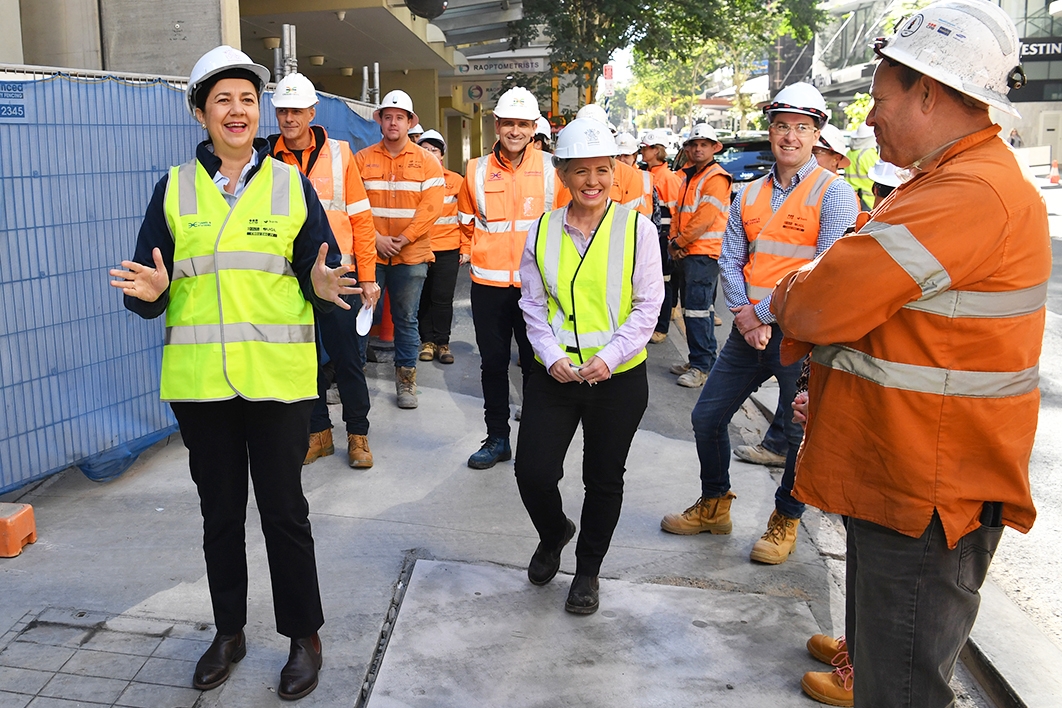This week brought more evidence that Australians support the harsh measures governments are using to control Covid-19. A week ago Essential, commissioned by the Guardian, showed big approval (though down from a mid-June peak) for the federal government’s handling of the crisis. And support for the response of state governments was also high and pretty steady, with two exceptions: Victoria heading down, for obvious reasons; Queensland on the rise.
A couple of days later Roy Morgan reported high support among Victorians for stage four lockdown measures.
And on Monday, the Australian’s Newspoll reported a lopsided response to its question about an area of conflict between the two spheres: a great big 80 per cent of respondents believe that “premiers should have the authority to close borders or restrict entry of Australians who live in other states.” Now, the wording is a bit once-removed — almost going to the constitutionality of these measures rather than whether premiers should act on such authority — but it’s a reasonable indicator of a high level of comfort with state and territory border closures.
(Respondents would probably be particularly supportive of their own jurisdiction’s decisions, and a state breakdown of these numbers, for Western Australia and Queensland in particular, would be illuminating.)
Now public goodwill, even if it can never be close to unanimous, is important for compliance. For this reason alone, authorities will be happy with these survey findings.
But what else does the widespread community support tell us?
One thing it certainly doesn’t indicate is that the federal, state and territory governments have adopted the “correct” approach. Any judgement on that question belongs in the future, when the pandemic is actually “over,” perhaps via international studies comparing various indices.
And in this situation, more than most, we would hope that government decisions are not driven by public opinion. On the evidence, they reflect technocratic and health considerations, although the rhetoric has at times wandered into demagogy. (Yes, I’m looking again at Labor premiers in the two big outlier states, Queensland and Western Australia, one of whom faces an election next month, and the other early next year.)
Much of the public approval would flow regardless of particular Covid-19 strategies. The wartime analogy is only a little overused: around the planet, heightened insecurity is driving many people further into the arms of governments and leading many to rediscover the value of collective action and community. Extreme outliers like the United States and Brazil, and perhaps Britain, where governments have ostentatiously made a mess of it, are exceptions to the rule.
And the longer-term politics? It would be a mistake to assume that governments will earn the undying gratitude of their communities. Voters are fickle and unsentimental, and memories can be short: policies that are unpopular when they are introduced — John Howard’s GST, for example — might subsequently receive a tick. For the inverse, see Kevin Rudd’s GFC stimulus, widely supported across the community, which eventually came to be seen as emblematic of Labor’s supposed fiscal recklessness.
But undeniably, as NT first minister Michael Gunner can attest, the short-term politics remain excellent for incumbents. Surveying voting intentions is notoriously difficult in the Northern Territory, and diseconomies of scale (its population is less than half Tasmania’s and smaller than Canberra’s) make opinion polls a rarity. Still, the few polls published suggest, tentatively, that by the time last month’s election took place the Labor government had made big gains on its position only months before.
But let’s return to that Essential question: “How would you rate your state government’s response to the Covid-19 outbreak?” Back in early May, Queensland’s Labor government attracted the lowest total “good” rating out of the five states surveyed (Tasmania was left out). Last week, while the other four states registered drops in approval, Queensland shot up to 73 per cent, coming in second after Western Australia.
You might call this fortuitous, with that election in October. Or maybe it’s the result of closing the borders (with the two most heavy-handed states being the most approved of). And perhaps it’s also because the election is approaching, and voters are turning their minds to what will be at stake.
Polls this year have had the opposition Liberal National Party slightly ahead in Queensland, on 52 per cent after preferences in June and 51 per cent on 30 July. But it will be surprising if the Palaszczuk government doesn’t enter the official campaign with a lead. And, given the opposition’s less-than-enthusiastic support for the government’s pandemic measures, it will also be surprising if Labor doesn’t prevail on 31 October.
What you can be sure of is that Annastacia Palaszczuk, like Michael Gunner before her, will do her best to make it all about the virus. Not about a job well done (elections are always about the future, and this pandemic is not close to being over) but about the dangers of changing strategy, of throwing away the results of all this sacrifice.
Way back in 1987, in the midst of the balance-of-payments crisis, Bob Hawke’s federal government employed the re-election theme Let’s Stick Together. Among the John Singleton–supplied lyrics were these: “Nobody ever got anywhere changing horses in midstream … Together, let’s stick together (repeat chorus)…”
That seems like a pretty useful message for incumbents in the time of Covid-19. •





